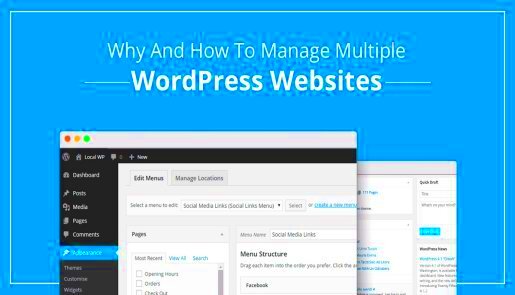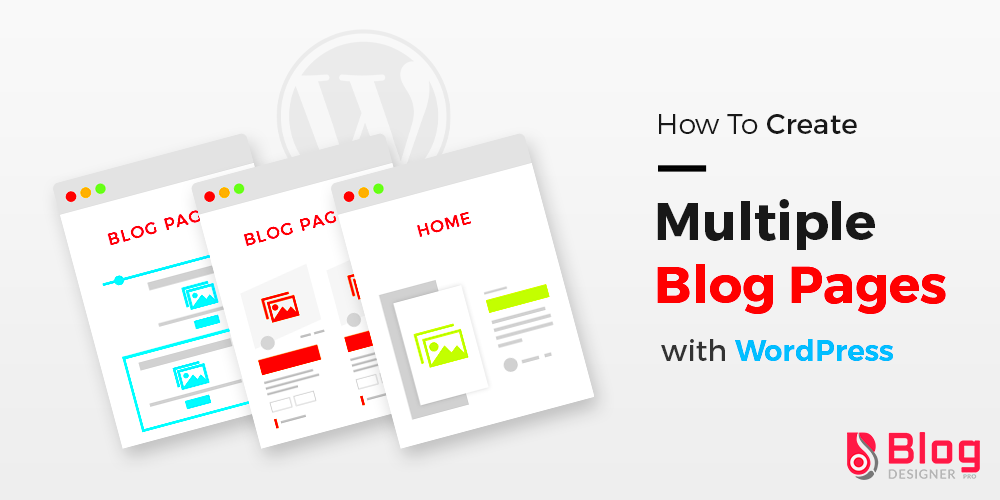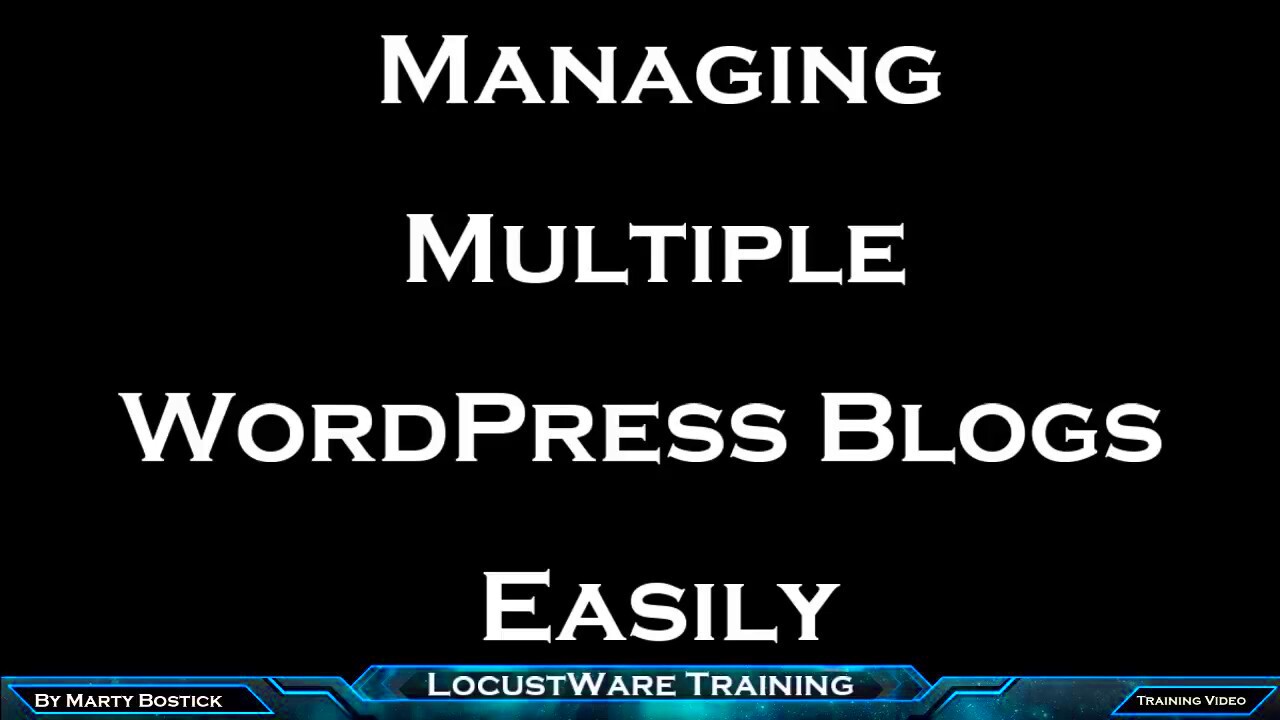Managing multiple blogs can seem like a daunting task, but WordPress makes it easier than you might think. Whether you want to focus on different topics or separate personal and professional content, WordPress provides a flexible platform to handle it all. With its user-friendly interface, plugins, and customizable themes, it’s the go-to choice for bloggers and businesses alike. In this post, we’ll explore how
Why WordPress is Ideal for Managing Multiple Blogs

WordPress is one of the most popular platforms for blogging, and for good reason. Here’s why it stands out when managing multiple blogs:
- Ease of Use: WordPress is known for its user-friendly interface. You don’t need to be a tech expert to set up and manage your blogs.
- Flexibility: Whether you have personal blogs, business sites, or niche-specific pages, WordPress gives you the flexibility to create and manage multiple blogs under one platform.
- Scalability: As your blogs grow, WordPress can scale with you. You can add more blogs, install additional plugins, or even customize the themes to suit your evolving needs.
- Cost-Effective: WordPress is an open-source platform, so it’s free to use. Even if you choose premium themes or plugins, the costs are generally lower than other platforms.
- SEO-Friendly: WordPress offers built-in SEO tools and plugins like Yoast SEO, making it easy to optimize your blogs for search engines.
- Multisite Feature: The WordPress Multisite feature allows you to create and manage several blogs from a single WordPress installation.
Setting Up and Organizing Multiple Blogs on WordPress

Setting up multiple blogs on WordPress is easier than you might think. Whether you’re creating different blogs for various topics or multiple blogs for your business, here’s how you can set it up effectively:
Step 1: Choose WordPress Hosting
First, you’ll need reliable hosting that supports WordPress. Choose a hosting provider that offers one-click installations for WordPress. Many hosting services offer plans tailored specifically for
Step 2: Set Up WordPress Multisite
If you want to manage several blogs from one dashboard, WordPress Multisite is the solution. Enabling Multisite allows you to create a network of blogs. Here’s how:
- Install WordPress on your domain.
- Modify the wp-config.php file to enable Multisite.
- Choose whether you want subdomains (blog1.yourwebsite.com) or subdirectories (yourwebsite.com/blog1).
- Activate the network setup and follow the instructions to add blogs to your network.
Step 3: Organize Your Blogs with Categories
Once your blogs are set up, it’s important to organize them into categories. You can create separate categories for each blog, which will make it easier to navigate and manage your content.
Step 4: Assign Roles and Permissions
If you have multiple authors or team members, assigning roles and permissions is crucial. WordPress allows you to assign different user roles like administrator, editor, author, and contributor. This way, you can control who has access to what on each blog.
Step 5: Install Plugins for Management
WordPress offers several plugins that can make managing multiple blogs easier. Some useful plugins include:
- Yoast SEO: Optimizes your blogs for search engines.
- Jetpack: Adds various functionalities like social sharing, security, and site statistics.
- WP Multisite User Sync/Unsync: Lets you easily manage users across multiple blogs.
- ManageWP: Helps you manage multiple WordPress sites from a single dashboard.
By following these steps, you can easily set up and organize multiple blogs on WordPress, streamlining the entire process and ensuring that everything is running smoothly.
Tips for Efficiently Managing Multiple Blogs
Managing multiple blogs can be a time-consuming task, but with the right approach, it becomes much easier. Here are some tips to help you stay organized and efficient while managing your WordPress blogs:
1. Use a Centralized Content Calendar
One of the biggest challenges in managing multiple blogs is staying on top of content creation. A centralized content calendar is a great way to plan ahead and ensure that each blog stays updated. You can schedule posts in advance, track deadlines, and even coordinate with your team if needed. Tools like Google Calendar, Trello, or Asana can help you organize and manage your content schedule.
2. Automate Routine Tasks
Automating repetitive tasks can save you a lot of time. You can use plugins like WP Scheduled Posts to schedule and publish content automatically. Another helpful tool is Buffer or Hootsuite for automating social media posts, so you don’t have to manually share your blog content across platforms.
3. Utilize User Roles
If you have a team, assign specific roles and responsibilities. WordPress allows you to assign different user roles like administrator, editor, and author. This helps distribute tasks effectively and ensures that each blog is managed by the right person.
4. Streamline Your Workflow with Plugins
Plugins like ManageWP or InfiniteWP let you manage all your blogs from a single dashboard. These tools allow you to update plugins, themes, and WordPress versions across multiple sites without logging into each one individually.
5. Focus on Quality Over Quantity
While it may be tempting to constantly publish new content, quality should always take priority. Regularly review your blogs and update old posts with fresh content, improve readability, and ensure they remain relevant.
Optimizing Performance for Multiple Blogs on WordPress
When managing multiple blogs, ensuring that each one performs well is crucial. Slow-loading websites can frustrate visitors and affect your SEO rankings. Here are some ways to optimize the performance of your WordPress blogs:
1. Use a Reliable Hosting Provider
Performance starts with your hosting provider. Choose a hosting plan that offers solid performance, especially if you’re running multiple blogs. Managed WordPress hosting like SiteGround, WP Engine, or Kinsta offers optimized servers for better speed and security.
2. Implement Caching
Caching helps improve page load speeds by storing copies of your pages for quicker access. You can use caching plugins like W3 Total Cache or WP Super Cache to make your websites load faster.
3. Optimize Images
Images can significantly slow down your site if they’re not properly optimized. Use image compression tools or plugins like Smush or EWWW Image Optimizer to compress images without losing quality. Additionally, consider using the WebP format for faster loading times.
4. Minimize Plugins
While plugins add functionality, too many can slow down your website. Regularly review your plugins and deactivate or delete any that are unnecessary. Use only the essential ones to keep your site fast and secure.
5. Enable Content Delivery Network (CDN)
A Content Delivery Network (CDN) helps speed up your website by serving your content from multiple servers around the world. Services like Cloudflare or MaxCDN distribute your site’s static files to reduce load times, especially for international visitors.
6. Regularly Update Your WordPress Installation
Keeping your WordPress installation, themes, and plugins up to date is essential for both performance and security. Regular updates fix bugs, improve speed, and ensure compatibility with new features and security patches.
How to Maintain SEO across Multiple Blogs
Maintaining SEO across multiple blogs can be a challenge, but it’s crucial for driving traffic and ensuring visibility on search engines. Here’s how you can stay on top of SEO for each of your WordPress blogs:
1. Use SEO Plugins
Plugins like Yoast SEO and Rank Math can help you optimize each post and page on your blogs. These tools provide recommendations for keyword optimization, meta tags, readability, and other important SEO factors.
2. Create SEO-Friendly URL Structures
Ensure your blog posts have clean, SEO-friendly URLs. Use permalinks that include relevant keywords. For example, instead of a URL like yourwebsite.com/post123, use something like yourwebsite.com/keyword-rich-post-title.
3. Build Internal Links
Internal linking helps improve your SEO by connecting related posts across your blogs. Make sure to link to relevant articles within each post. This also helps visitors explore more of your content and increases page views, which can positively affect your SEO rankings.
4. Optimize for Mobile
Google prioritizes mobile-friendly websites in its rankings. Make sure your blogs are responsive and load well on mobile devices. Most WordPress themes are mobile-friendly, but it’s always a good idea to test your site’s performance using Google’s Mobile-Friendly Test tool.
5. Perform Keyword Research
Keyword research is key to ranking higher in search results. Use tools like Google Keyword Planner or Ahrefs to find relevant keywords for each blog. Include these keywords in your titles, headings, and body content naturally.
6. Regularly Update Content
Search engines favor fresh, updated content. Regularly review your old blog posts and update them with new information, keywords, and improved formatting. This not only helps with SEO but also keeps your content relevant for your readers.
7. Build Backlinks
Backlinks from reputable websites are one of the most powerful ranking factors in SEO. Focus on building backlinks by guest posting, collaborating with influencers, or creating shareable content that others will link to.
By following these SEO practices across all your blogs, you’ll be able to maintain strong search engine rankings and drive consistent traffic to your sites.
Ensuring Security and Backup for Your WordPress Blogs
Security is essential when running multiple blogs on WordPress, especially if you’re managing sensitive information or engaging with a large audience. Without proper security measures, your blogs could be vulnerable to attacks or data loss. Here’s how you can ensure the security and stability of your WordPress blogs:
1. Keep WordPress Updated
One of the simplest yet most effective ways to ensure security is to keep your WordPress installation, plugins, and themes updated. WordPress regularly releases security patches to fix vulnerabilities. Enabling automatic updates for minor releases ensures your site stays secure without manual intervention.
2. Use Strong Passwords
Weak passwords are an open invitation for hackers. Always use strong, unique passwords for each of your WordPress accounts, especially for the administrator account. Tools like LastPass or 1Password can help you generate and store secure passwords.
3. Install a WordPress Security Plugin
Security plugins like Wordfence, iThemes Security, or Sucuri offer comprehensive protection against malware, brute force attacks, and other security threats. These plugins can also monitor your site for suspicious activity and alert you to potential issues.
4. Enable Two-Factor Authentication
Two-factor authentication (2FA) adds an extra layer of security to your login process. With 2FA, you’ll need to provide a second verification step, such as a code sent to your phone, in addition to your password.
5. Backup Regularly
Regular backups are crucial for protecting your content. In case your site is compromised, having a recent backup ensures you can quickly restore your blogs to their original state. Use plugins like UpdraftPlus or BackupBuddy to automate the backup process and store backups offsite (e.g., Google Drive, Dropbox, or Amazon S3).
6. Implement SSL Encryption
Secure Sockets Layer (SSL) encryption ensures that the data transferred between your website and visitors is encrypted, preventing it from being intercepted. You can obtain an SSL certificate from your hosting provider or use free options like Let’s Encrypt.
7. Monitor Site Activity
Regularly monitor your sites for unusual activities, such as sudden spikes in traffic or unauthorized login attempts. You can use tools like Google Search Console or Jetpack for monitoring your website’s performance and security.
FAQ: Common Questions about Managing Multiple Blogs on WordPress
If you’re considering running multiple blogs on WordPress, you probably have a few questions. Here are answers to some common ones:
1. Can I manage multiple blogs with one WordPress account?
Yes! WordPress Multisite allows you to manage multiple blogs from a single WordPress dashboard. This feature is ideal for managing blogs under one network, saving you time and effort.
2. How can I ensure each blog remains unique in terms of design and content?
Each blog can have its own theme, layout, and design settings within WordPress Multisite. You can also tailor each blog’s content by using categories, tags, and custom post types to keep things organized and differentiated.
3. How do I manage multiple blogs efficiently?
Efficient management comes down to planning and organization. Use a content calendar to plan posts, automate tasks with plugins, and assign roles to team members for better task distribution. Tools like ManageWP can help you manage updates and backups for all blogs in one place.
4. How can I improve SEO for multiple blogs?
To maintain good SEO across all blogs, ensure that each blog follows best SEO practices, such as using relevant keywords, creating quality content, and building internal and external links. Using SEO plugins like Yoast or Rank Math can help optimize your blogs for search engines.
5. Is it safe to run multiple blogs on a single hosting account?
Running multiple blogs on a single hosting account is safe as long as your hosting provider offers enough resources to handle the increased traffic and content. Managed WordPress hosting providers typically offer optimized servers to ensure smooth performance for multiple blogs.
6. How can I secure my WordPress blogs?
Use strong passwords, enable two-factor authentication, install security plugins like Wordfence, and regularly back up your blogs. Additionally, ensure that your WordPress installation and all plugins/themes are up to date to prevent security vulnerabilities.
Conclusion: Best Practices for Running Multiple Blogs on WordPress
Running multiple blogs on WordPress is a great way to manage different niches or topics under one roof, but it requires careful planning and organization. Here’s a summary of the best practices to follow for smooth and efficient blog management:
- Use WordPress Multisite: It’s the most efficient way to manage multiple blogs from a single dashboard.
- Stay Organized: Use content calendars, assign roles to team members, and keep your tasks structured.
- Optimize Performance: Ensure your blogs load quickly by using caching, image optimization, and a reliable hosting provider.
- Implement Strong Security: Protect your blogs from threats by using strong passwords, security plugins, and regular backups.
- Focus on SEO: Apply consistent SEO practices across all blogs to maintain high rankings and drive traffic.
- Backup Regularly: Always have a recent backup of your blogs in case something goes wrong.
By following these best practices, you can efficiently run multiple blogs, ensuring they are secure, well-optimized, and successfully managed. With the right tools and strategies in place, WordPress is the ideal platform to help you grow and maintain a network of blogs.



